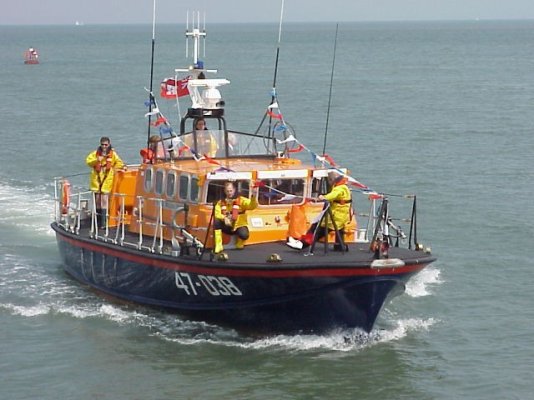All the engine experts I've talked to over the years--- the mechanics at a couple of diesel shops, friends in the marine engine industry, a couple of RNLI (Royal National Lifeboat Iinstitute in UK who maintain boats ready to go instantly), etc.--- have been fairly scornful of the notion of cranking an engine for a bit before starting it. All that does, they said, is wear out the starter faster. The difference it will make in reducing the wear on the moving parts will be minimal and they all said that the typical engine will fail for some other resaon--- bad valve(s), failed head gasket, broken ring, etc--- long before the wear caused by startup will have any noticeable detrimental effect. Based on all this, I've concluded that pre-lubing an engine by turning it with the starter, while not quite an armchair theory, is not worth doing.
This kind of pre-lubing is possible with a Lehman 120 since the engine can be cranked with the fuel shutoff levers pulled. But I've never heard anyone who knows or works on these engines recommend this. The only exceptions have been a few people who said that after long periods of sitting--- like all winter--- it's a good idea. But on an engine that is used regularly, even if the time between uses is a couple of months, it accomplishes nothing in terms of adding engine longevity but it does, if done every time the engines are started, contribute toward hastening the day when the starter will give out.
There are engines that have been designed with pre-lube systems in them.* As they've been explained to me, these systems pump oil throughout the engine prior to the engines being started.* So when the engines are turned for starting, the oil pressure is already up.* That makes sense for engines that benefit from or require this degree of lubrication at startup because the engine components never move until full oil pressure exists at all the lubrication points.* That's different than turning over the engine with the starter with no oil pressure anywhere.
Now pre-warming an engine is worthwhile, these folks all said. In the case of the RNLI engineers, their lifeboats (see photo) are kept in their slips or on their launching slipways ready to be started and go to full throttle immediately. So the coolant in their engines (GM6V92) is kept circulating at the engine's full operating temperature 24/7/365.
We don't have this sort of system in our boat, obviously, but in the colder months in the PNW, usually October through April, we keep an electric oil heater in the engine room which maintains the temperature at about 55 to 60 degrees. As a result, the engines start instantly even in the dead of February. This avoids the prolonged turning on the starter and the reluctant, rough, "chugging" start that you can get with a very cold diesel that does not have glow plugs or air pre-heat systems on it, which the Lehman does not (our Onan generator does). This, the engine people I've talked to said, is something to avoid if at all possible.
The RNLI lifeboat in the photo is the "William Street" and is based in Fleetwood, England. Several years ago I had the rare priviledge of being invited to go out on the "Street" during a training exercise during which they let me con the boat for a couple of hours in Morcambe Bay. They told me RNLI boats are operated at two engine speeds only, idle and full throttle. They weren't kidding.
-- Edited by Marin on Friday 21st of May 2010 12:05:39 PM


